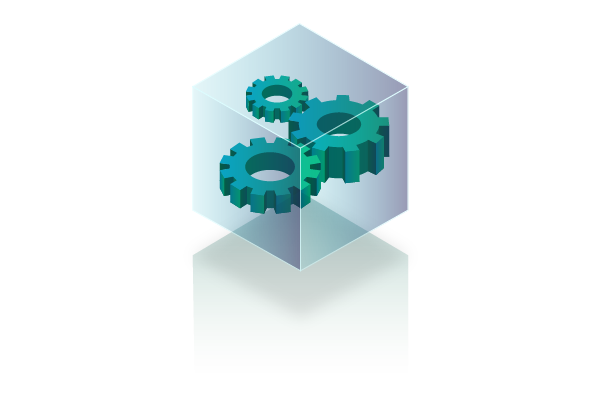In our rapidly evolving digital era, the buzz around “blockchain for beginners” has grown louder. You’ve probably encountered this term in conversations about cryptocurrencies, notably Bitcoin, but blockchain technology goes way beyond digital currencies. This article intends to unravel the mystery of blockchain for beginners, offering a straightforward explanation of this innovative concept and shedding light on its potential to transform various industries beyond just finance.
At its core, blockchain is like a digital ledger that records transactions in a secure and transparent manner. Unlike traditional ledgers, which are centralized and prone to manipulation, blockchain is decentralized, meaning it operates on a network of computers, or nodes, spread across the globe. These nodes work together to validate and store transactions, ensuring an incorruptible and tamper-proof record of data. This fundamental concept underpins the security and trustworthiness of blockchain technology, making it applicable to a wide range of fields.
While blockchain initially gained recognition in the world of cryptocurrencies, its versatility has led to widespread adoption in diverse sectors. From supply chain management and healthcare to voting systems and intellectual property, blockchain has the potential to revolutionize how information and assets are tracked, verified, and exchanged. So, whether you’re a newbie or an enthusiast, delving into the world of blockchain for beginners can uncover a universe of possibilities beyond the realm of finance.
What Is Blockchain?

Blockchain technology was initially introduced in 2008 as the underlying technology for the cryptocurrency Bitcoin. However, its applications have since expanded far beyond digital currencies. The blockchain’s fundamental characteristics, including decentralization, transparency, and immutability, make it suitable for a wide range of use cases across various industries.
One of the key features of blockchain is its decentralized nature. In a blockchain network, multiple nodes (computers) participate in the validation and maintenance of the ledger. These nodes work together to reach a consensus on the validity of transactions and the state of the ledger. This decentralized consensus mechanism eliminates the need for a central authority, such as a bank or government, to oversee and verify transactions. As a result, blockchain can operate 24/7 without the need for intermediaries, making it highly resilient and available.
The transparency aspect of blockchain is also significant. Every transaction recorded on the blockchain is visible to all participants in the network. While individual transactions are pseudonymous (meaning they do not reveal the real-world identities of the parties involved), the transaction history itself is open for anyone to inspect. This transparency not only promotes trust but also allows for greater accountability and auditability of data and transactions.
Also Read: What is a Private Blockchain? A First-Time User’s Guide
Immutability is another crucial aspect of blockchain. Once data is added to a block and the block is added to the chain, it becomes extremely challenging to alter or delete that data. This feature is achieved through cryptographic hashing and consensus mechanisms, making blockchain records highly secure and resistant to tampering. It’s important to note that while data is immutable, errors can still occur in blockchain applications, so careful design and validation are essential.
Blockchain technology has found applications in various industries beyond finance, including supply chain management, healthcare, voting systems, real estate, and more. In supply chain management, for instance, blockchain can be used to track the origin and movement of goods, helping to prevent fraud and ensure the authenticity of products. In healthcare, patient records can be securely stored and shared among authorized parties, improving data accuracy and privacy. These examples demonstrate how blockchain’s core principles are reshaping the way data and transactions are managed across different sectors.
How Does Blockchain Work?

Blockchain is a decentralized and distributed ledger technology that underpins various cryptocurrencies and has applications in other fields as well. It works by creating a chain of blocks, each containing a set of transactions. These transactions are grouped together in a block and linked to the previous block, forming a continuous chain of data. This chain is maintained across a network of computers or nodes.
In the case of Bitcoin and other cryptocurrencies, the consensus mechanism, such as Proof of Work (PoW) or Proof of Stake (PoS), is crucial for ensuring the security and trustworthiness of the blockchain.
In the Proof of Work (PoW) method, miners compete to solve complex mathematical puzzles. These puzzles require significant computational power and energy consumption. The first miner to solve the puzzle gets the right to add a new block of transactions to the blockchain. This process is known as “mining,” and miners are rewarded with cryptocurrency tokens, like Bitcoin, for their efforts. PoW is known for its security and the high cost of attacking the network, making it a robust mechanism.
On the other hand, the Proof of Stake (PoS) mechanism operates differently. Validators in a PoS blockchain lock up a certain amount of cryptocurrency as collateral to create and validate new blocks. The likelihood of being chosen to create a new block is determined by the amount of cryptocurrency they have staked. Validators are incentivized to act honestly, as they risk losing their staked tokens if they engage in malicious activities. PoS is often considered more energy-efficient compared to PoW.
Both PoW and PoS, along with other consensus mechanisms like Delegated Proof of Stake (DPoS) and Byzantine Fault Tolerance (BFT), ensure the integrity and trustworthiness of the blockchain. They prevent double-spending, unauthorized alterations to the ledger, and maintain a secure and transparent record of transactions across the network.
In summary, blockchain technology relies on a consensus mechanism, such as PoW or PoS, to validate and record transactions on a decentralized and secure ledger. This mechanism ensures that the blockchain remains tamper-proof and trustworthy while also providing incentives for participants to act honestly in maintaining the network.
Key Features of Blockchain

Blockchain technology offers several key features that enhance its appeal and utility across various sectors:
Security
One of the foremost benefits of blockchain is its security. It uses advanced cryptographic techniques to ensure that once data is recorded in a block, it cannot be altered retroactively without altering all subsequent blocks. This feature makes it tamper-proof and highly secure against fraudulent activities and hacks.
- Cryptographic Hashing: At the heart of blockchain’s security is cryptographic hashing. Each block contains a unique hash, and any change in the block’s data changes this hash. Since each block also contains the hash of the previous block, altering any block would require altering all subsequent blocks, which is computationally impractical on a large scale.
- Immutability: Once data has been written to a blockchain, it is nearly impossible to change. This immutability protects against fraud and unauthorized activities. It’s particularly useful in scenarios like financial transactions, legal contracts, and anywhere data integrity is crucial.
- Consensus Algorithms: Blockchain employs consensus algorithms like Proof of Work or Proof of Stake to agree on the validity of transactions. These algorithms ensure that all participants in the network have a common understanding of the data recorded, further bolstering security against attacks or errors.
Transparency
Blockchain operates on a distributed ledger technology, meaning all transactions made are completely transparent and visible to anyone who has access to the system. This level of transparency builds trust among users, as everyone can verify the transactions independently.
- Public Ledger: The ledger of transactions on a blockchain is open to anyone who has access to the network. This means every transaction can be verified and traced back to its origin. This level of transparency can increase accountability and trust among participants.
- Auditability: The transparent nature of blockchain makes it an excellent tool for audit trails. Since every transaction is recorded sequentially and indefinitely, it provides an indelible audit trail for the life of an asset, even between parties. This is particularly beneficial in industries where tracking the origin and history of products is paramount.
- Trust-building: In systems where corruption or mistrust is an issue, the transparency provided by blockchain can contribute to rebuilding trust. It offers a way for transactions to be publicly verified and ensures that all actions are traceable and permanent.
Decentralization
Unlike traditional centralized systems where a single entity has control, blockchain is decentralized. This means that it is not owned or controlled by any one entity, reducing the risks associated with centralization such as corruption or single points of failure.
- No Central Authority: Traditional systems typically have a central authoritative figure or organization. Blockchain distributes authority among a network of nodes, making it decentralized. This means no single entity can own or control the network completely, significantly reducing the risks of corruption, censorship, and downtime.
- Resilience and Redundancy: Decentralization inherently brings about greater resilience to attacks and failures. Since the system doesn’t rely on a central point, it’s much harder for any disruptive event to affect the entire network. This distributed nature ensures that even if parts of the network go down, the system as a whole continues to function.
- Empowerment: By decentralizing control, blockchain empowers its users. Instead of relying on a central authority, users have direct control over their transactions and data. This empowerment can drive innovation and engagement in the system, as users aren’t bound by the rules and fees of a central authority.
Efficiency
Blockchain technology streamlines and automates processes, significantly reducing the need for intermediaries typically found in various industries like finance and real estate. This reduction in intermediaries can lead to faster transactions and lower costs, making processes more efficient.
- Reduced Intermediary Costs: By enabling peer-to-peer transactions without the need for intermediaries, blockchain can significantly reduce costs associated with transactions. This is particularly evident in industries like finance, where blockchain can streamline processes such as payments and settlements.
- Faster Transactions: Traditional banking systems can be slow, taking days for cross-border transactions. Blockchain can significantly reduce transaction times to minutes or even seconds. This increase in speed can enhance the efficiency of business operations and may revolutionize industries reliant on quick transaction times.
- Automated Contracts: Smart contracts are self-executing contracts with the terms of the agreement directly written into code. They automatically execute actions when conditions are met, without the need for intermediaries. This automation can lead to huge gains in efficiency and accuracy in contract execution and enforcement.
Each of these features contributes to the robustness and appeal of blockchain technology. From enhancing security to increasing efficiency, these characteristics are driving the adoption of blockchain across a wide range of sectors and applications. Whether it’s securing financial transactions, ensuring the integrity of supply chains, or enabling new decentralized business models, blockchain stands out as a transformative technology.
Applications of Blockchain
Blockchain technology, known primarily for underpinning cryptocurrencies like Bitcoin, has a range of diverse applications across various sectors:
Supply Chain Management
By utilizing blockchain, companies can create a transparent and unchangeable ledger of goods movement. This application helps in tracking the origin, journey, and authenticity of products, significantly reducing the chances of fraud and ensuring that consumers and businesses alike can verify the history of the products they purchase.
Healthcare
Blockchain can revolutionize healthcare record management. Securely storing patient records on a blockchain ensures that they are immutable, traceable, and accessible only by authorized persons. This not only helps in maintaining patient privacy but also enables a more efficient exchange of medical information among healthcare providers, resulting in potentially better and more coordinated care.
Voting Systems
One of the most critical applications of blockchain is in creating a secure and transparent voting system. Blockchain can help mitigate common concerns in voting, such as double voting or vote tampering, by providing a secure digital ledger. Each vote can be traced to its source without revealing the voter’s identity, reducing the risk of fraud and ensuring the integrity of the electoral process.
These examples illustrate just a few ways blockchain can be applied beyond digital currencies, highlighting its potential to bring about more transparent, efficient, and secure systems across various domains.
Challenges and Future Trends
Blockchain technology has emerged as a transformative force across various industries, promising to revolutionize processes and systems. However, its adoption and continued growth are not without their fair share of challenges. Understanding these challenges and identifying future trends is crucial for the successful development and integration of blockchain solutions.
Scalability
One of the primary challenges facing blockchain technology is scalability. Most public blockchains, including Bitcoin and Ethereum, struggle to handle a large number of transactions simultaneously. As more users and businesses adopt blockchain, network congestion becomes a significant issue. Scalability solutions like sharding, layer-2 protocols, and increased block sizes are being explored to address this limitation.
Energy Consumption
The energy consumption associated with Proof of Work (PoW) consensus mechanisms, used in popular cryptocurrencies like Bitcoin, has raised environmental concerns. The immense computational power required for mining has a significant carbon footprint. To mitigate this, blockchain projects are increasingly turning to more energy-efficient consensus mechanisms, such as Proof of Stake (PoS) or hybrid PoW/PoS models, which consume significantly less energy.
Also Read: 12 Top Polygon (Matic) Competitors to Know in 2024
Regulatory Concerns
Blockchain’s decentralized and pseudonymous nature poses regulatory challenges. Governments and financial institutions are working to establish clear guidelines and regulations to ensure compliance, prevent illegal activities, and protect consumers. Striking a balance between fostering innovation and maintaining security is a key challenge in the evolving regulatory landscape.
Future Trends and Solutions
- Proof of Stake (PoS) and Beyond: The shift from PoW to PoS consensus mechanisms is a prominent trend. PoS systems, like Ethereum 2.0, aim to reduce energy consumption and improve scalability. Additionally, innovative consensus mechanisms such as Delegated Proof of Stake (DPoS) and Proof of Authority (PoA) are being explored to further enhance blockchain performance and sustainability.
- Interoperability: Interoperability between different blockchain networks is another critical trend. Projects like Polkadot and Cosmos are working on creating ecosystems that allow various blockchains to communicate and share data seamlessly. This will enable the development of cross-chain applications and enhance the overall utility of blockchain technology.
- Privacy Enhancements: Enhancing privacy features within blockchain networks is a growing concern. Solutions like Zero-Knowledge Proofs (ZKPs) and Confidential Transactions are being integrated to ensure that sensitive data remains private while still benefiting from blockchain’s transparency and security.
- Digital Identity: The development of secure and decentralized digital identity solutions using blockchain is gaining traction. These systems aim to provide individuals with control over their personal data and enable secure access to services without the need for third-party intermediaries.
- Central Bank Digital Currencies (CBDCs): Several countries are exploring the creation of Central Bank Digital Currencies, using blockchain technology as the underlying infrastructure. CBDCs could streamline monetary policy, reduce transaction costs, and enhance financial inclusion.
Conclusion
In conclusion, blockchain for beginners is a fascinating journey into a technology that has the potential to reshape industries and the way we interact with digital data. While there are challenges to overcome, the benefits of transparency, security, and decentralization are too promising to ignore.
As you explore the world of blockchain further, remember that the foundation is simple: it’s a chain of blocks, each containing information, working together to create a decentralized, trustworthy ledger. So, take your first steps towards understanding blockchain, and embrace the future of decentralized technology.
Disclaimer: The information provided by HeLa Labs in this article is intended for general informational purposes and does not reflect the company’s opinion. It is not intended as investment advice or recommendations. Readers are strongly advised to conduct their own thorough research and consult with a qualified financial advisor before making any financial decisions.

Joshua Soriano
I am a writer specializing in decentralized systems, digital assets, and Web3 innovation. I develop research-driven explainers, case studies, and thought leadership that connect blockchain infrastructure, smart contract design, and tokenization models to real-world outcomes.
My work focuses on translating complex technical concepts into clear, actionable narratives for builders, businesses, and investors, highlighting transparency, security, and operational efficiency. Each piece blends primary-source research, protocol documentation, and practitioner insights to surface what matters for adoption and risk reduction, helping teams make informed decisions with precise, accessible content.
- Joshua Soriano#molongui-disabled-link
- Joshua Soriano#molongui-disabled-link
- Joshua Soriano#molongui-disabled-link
- Joshua Soriano#molongui-disabled-link

